[Maggie’s blog] Beautiful Science
- By Maggie Masetti
- March 26, 2012
- 1 Comment
On my recent vacation to Los Angeles, I visited Huntington Gardens. It’s a gorgeous place and in addition to gardens, it has several museums. I was very excited to see their permanent exhibit of old and rare science books. The exhibit is called “Beautiful Science: Ideas that Changed the World” – and they aren’t kidding by titling it that. The front room is all astronomy texts and in them are indeed contained some revolutionary ideas.
Here are some of the photos I took during my visit.
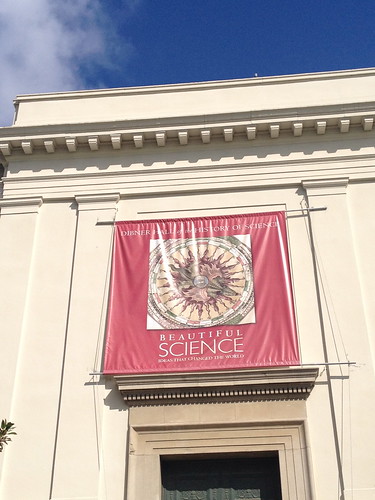
The exhibit starts with a copy of Aristotle from 1495 – the text in which he, in the 300s BC, suggested that everything revolves around the Earth.
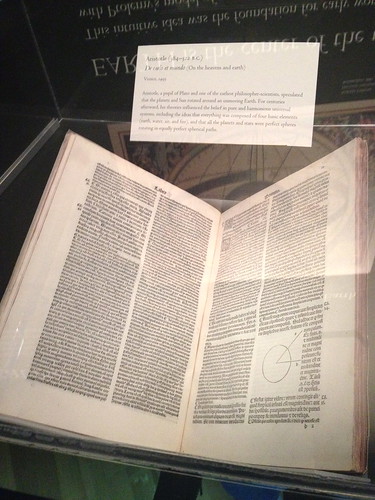
Next is a text from 1279, which contains Ptolemy’s 2nd century earth-centric universe. The book contains drawings of Ptolemy’s epicycles, needed to explain the movements of the planets in the sky.
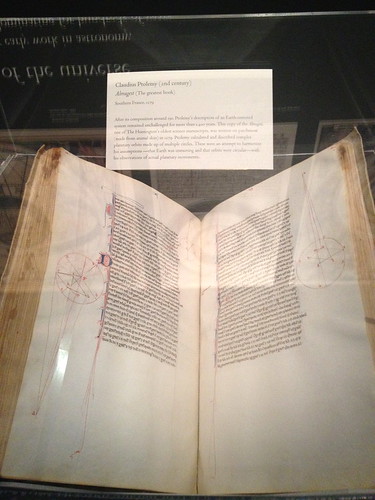
This is Edwin Hubble’s copy of Copernicus’ “On the revolution of heavenly bodies”, a second edition, dating to 1566. Originally published in 1543, this book posited that the Earth was not the center of the universe, but one of the planets revolving around the Sun. Note that censors marked out portions of the text because this idea was so heretical.
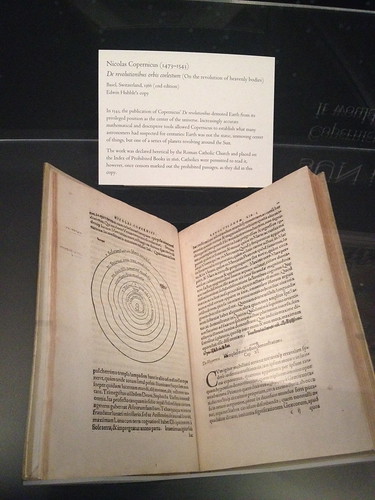
A detail of the book:

Kepler’s laws of planetary motion are contained in this book, “Astronomia nova”, published in 1609:
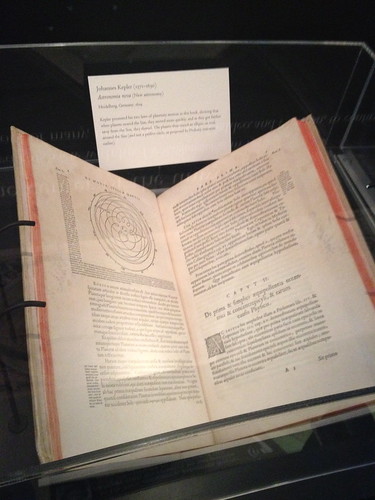
A detail:

This is Tycho Brahe’s “Astronomy renewed”, published in 1610 and owned by astronomer George Ellery Hale. In this book, Tycho tried to find a middle ground between Copernicus and Aristotle was theorizing that the planets orbited the Sun, and the Sun orbited the Earth.
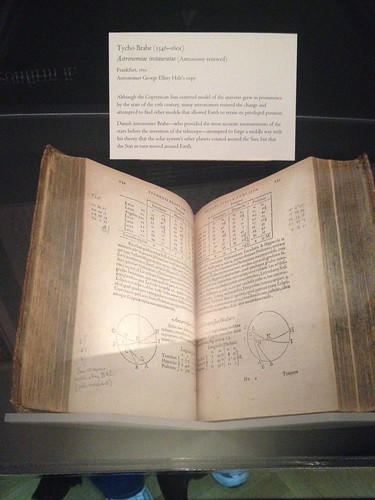
Here is one of the famous books ever in physics, Isaac Newton’s Principia (“Natural Principles of Natural Philosphy). It’s important to astronomy because it shows that the heavens and the earth are both governed by universal laws. He used math to describe the sun-centric universe, laying out the laws of motion and the basis of classical mechanics. Even cooler, is that this is Newton’s own copy of the book, and contains his own annotations. The book was later owned by Edmond Halley who also made notes in it.
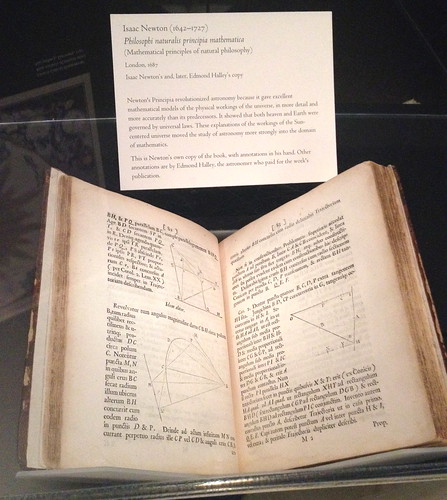
A detail:
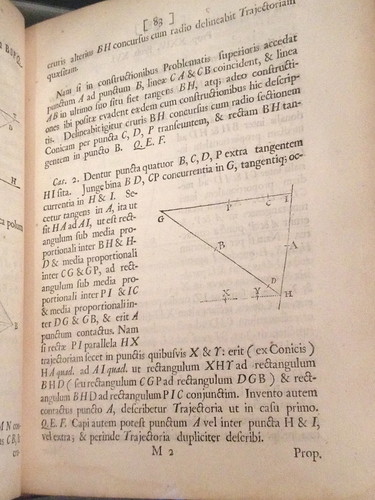
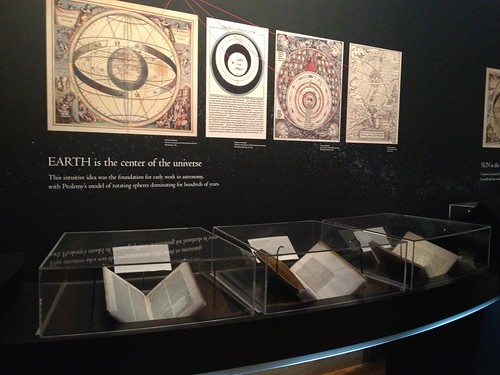
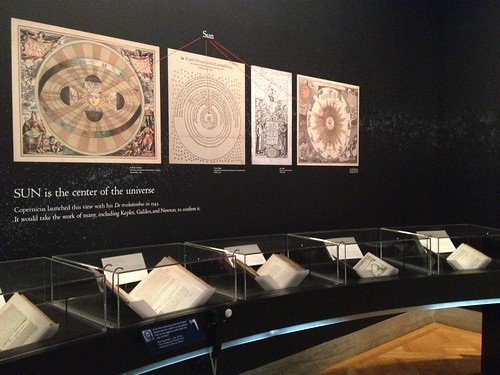
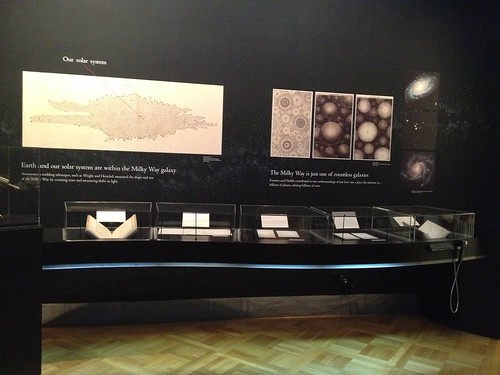
There were also some facsimilies of famous letters. Here’s one written by Annie Jump Cannon, famous for her work on classifying stars.
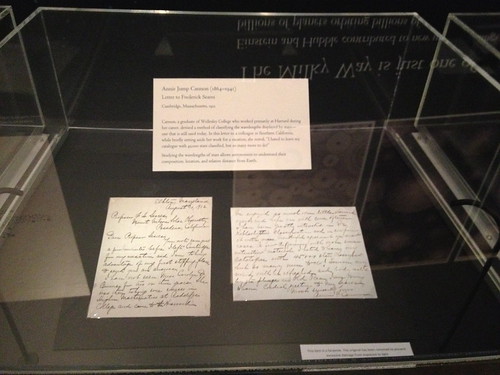
And one from Albert Einstein to George Ellery Hale, written two years before he published his theory of relativity.
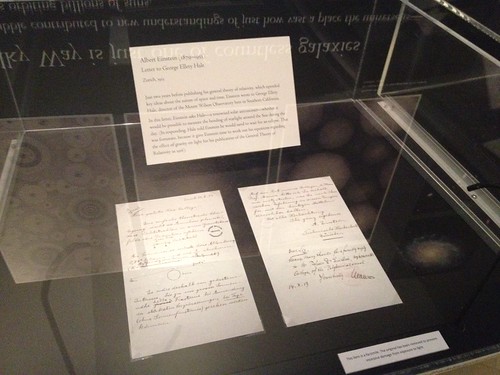
Here is Edwin Hubble’s log book from the 100-inch telescope at Mount Wilson:

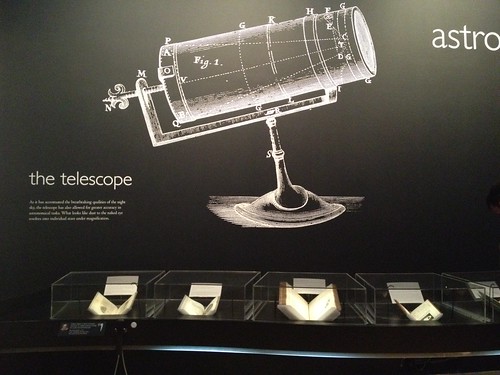
Moving back again in time, we turn to the telescope, with this important text from Galileo, published in 1610, in which has the first drawings ever made of the moon under magnification. The publication of this work, in which Galileo first displays the results of his work with the telescope, is also why we celebrated the International Year of Astronomy in 2009, as it was considered the 400th anniversary of Galileo’s observations with a telescope. (We even “interviewed” Galileo about his work in a past podcast.)
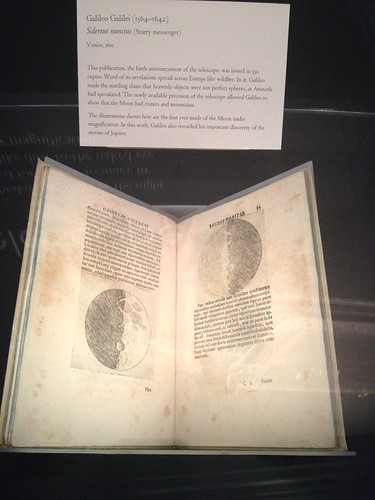
In this text from 1659, Christiaan Huygens proposed that Saturn had rings. He even built a new telescope to see Saturn more clearly. It was a decade until his theory was accepted.

Newton made his own improvements to the telescope, documented from this book in 1672:

There were other sections to the exhibit, including biology and natural studies text – including old (and scary) medical books.
Then it was back to physics.
Here are some early lightbulbs:
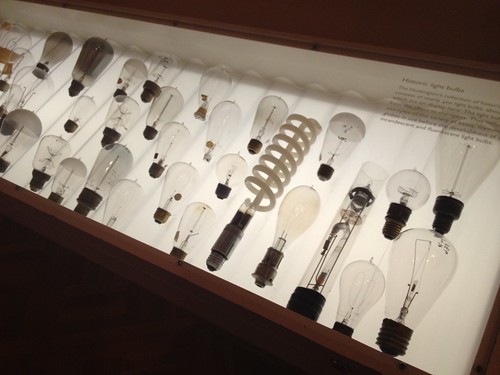

Faraday’s 19th century experiments with electricity:

Volta’s 18th century book about galvanism, or creating electricity with chemistry:
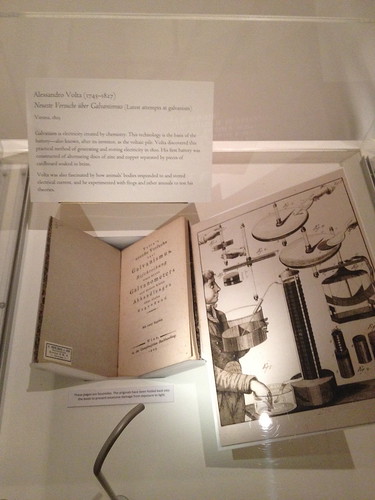
And Benjamin Franklin’s own book on his experiments with electricity:

Isaac Newton’s own copy of his “Opticks” – this book is also considered one of the most important books in science. It is a series of experiments and deductions about light and color, and diffraction of light. In this book is described Newton’s splitting of light into a spectrum with a prism. While the Principia was all about math – this book was about experiment.

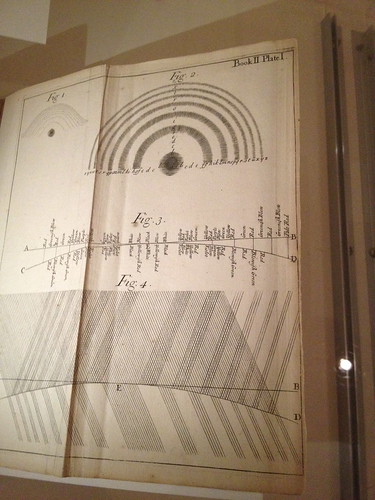

Rene Descartes on how eyes work:
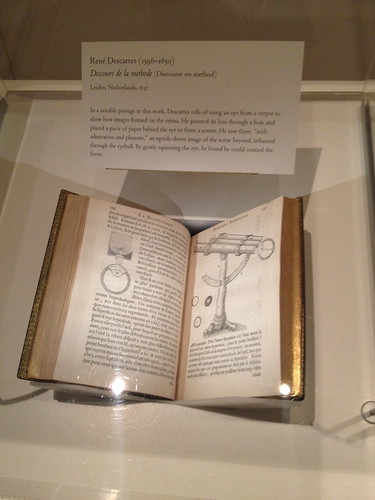
Kepler’s book on optics…
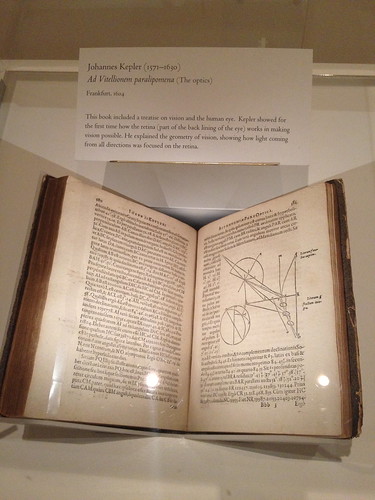
…which might contrast with Euclid’s theories on optics from 300BC:
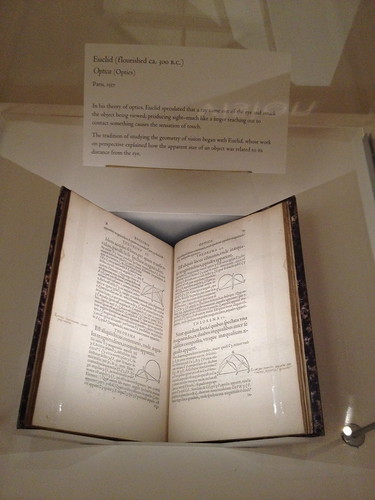
Or Plato from the even earlier:
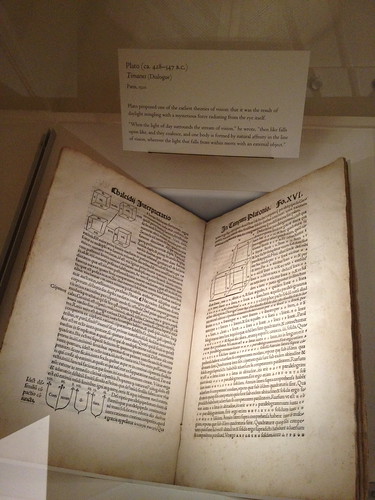
Here is Einstein’s famous publication of his theory of special relativity from 1905:

Detail:
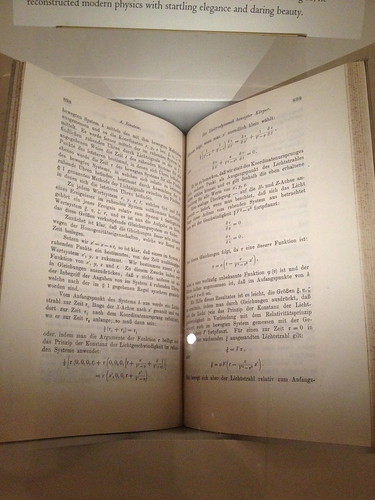
And Maxwell’s 19th century text which unified electricity and magnetism (you might have heard of his equations):
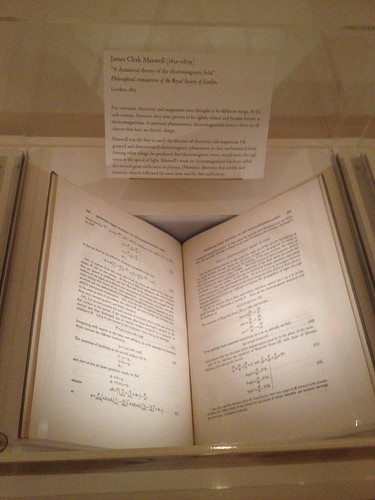
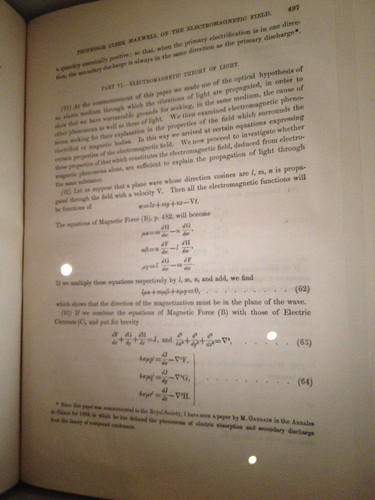
There were a number of books on spectra and their analyis:
From Lockyer:
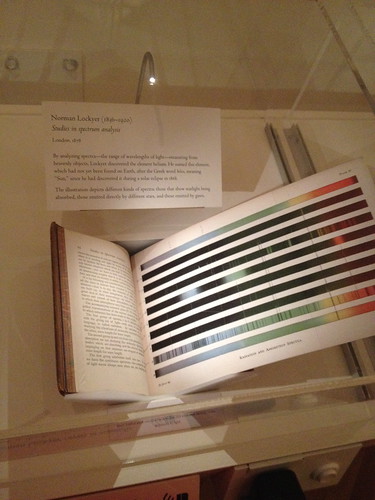
To Fraunhofer… (This is George Ellery Hale’s copy of the text. Fraunhofer had the lines that are the signatures of chemical elements in the spectrum of the sun and other stars named for him.)
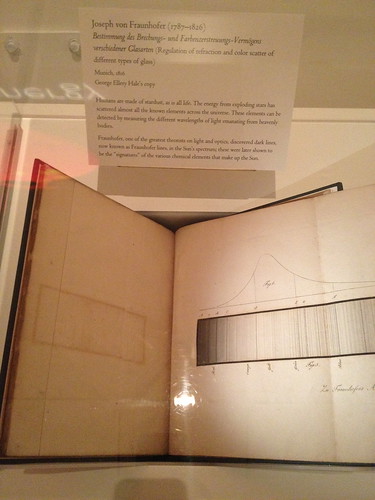
To Kirchoff, who helped determine what the sun and stars are made of:
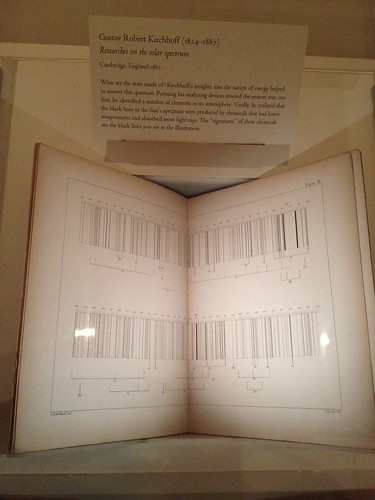
(I saw Kirchoff’s birthplace and spectrograph in Heidelberg, Germany.)
If you have a chance to see this exhibit, it’s well worth it. This is only a small sampling of what’s there. It’s to be in the presence of all these great works and to think about how the ideas contained in them left our understanding of the world forever changed.
Here’s a full slideshow of all the images:



This is SO cool! Both the astronomy and history geeks in me are freaking out!